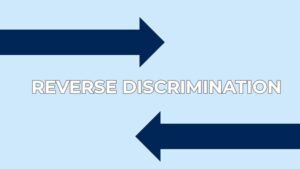Damages calculations are relatively simple when non-exempt employees are paid on an hourly basis. Their regular rates equal their hourly wage rates paid. As such, their overtime wages due are equal to one and one-half times their regular rates of pay. Except for New York State’s hospitality industry, however, the FLSA and NYLL do not require employees to be paid on an hourly basis. Complications quickly arise when employees are paid on a different basis, such as at different hourly wage rates within the same workweek, shift or day rates, piece rates, commissions, salaries, or a combination of these.
The regular rate is generally calculated by dividing an employee’s total remuneration for a workweek, excepting statutory exclusions, by his or her total hours worked in that workweek. Overtime wages are owed to the employee at the half-time rate because the employee was already compensated at the regular or straight time rate for overtime hours worked. Some examples follow:
- Piece Rate: A non-exempt delivery worker in New York City is paid on a piece rate basis of $1.50 per package delivered. He delivered 600 packages and worked 45 hours in a workweek. His total remuneration is $900, equal to $1.50 per package delivered times 600 packages. His regular wage rate is $20, equal to $900 divided by 45 hours. He would be owed $50 more in overtime wages, equal to his regular rate of $20 divided by two (e., $10, the half-time rate) times 5 overtime hours worked.
- Weighted Average: A non-exempt construction worker in Buffalo, New York is paid at different hourly rates depending on the task that he performs: $25 per hour for general laborer work; $30 per hour for electrical work; and $27 per hour for concrete work. In a workweek, he performs 25 hours of general laborer work, 10 hours of electrical work, and 15 hours of concrete work, for total compensation of $1,330 for 50 hours worked. His regular rate is $26.60 per hour, equal to $1,330 divided by 50 hours. He would be owed $133 more in overtime wages, equal to his regular rate of $26.60 divided by two (e., $13.30, the half-time rate) times 10 overtime hours worked.
- Day or Job/Shift Rates: A non-exempt cashier in a convenience store in Albany, New York is paid $200 per day worked. She worked 5 days, totaling 55 hours, and was paid $1,000 in a workweek. Her regular rate is $18.18, equal to her $1,000 paid divided by 55 hours. She would be owed $136.35 in overtime wages, equal to her regular rate of $18.18 divided by two (e., $9.09, the half-time rate) times 15 overtime hours worked.
- Commissions are added to a non-exempt employee’s other earnings for the workweek and calculated into the regular rate. For example, a non-exempt sales employee is paid $15 per hour plus weekly commissions. She worked 45 hours one week, for which she was already paid $712.50 (e., $15 x 40 hours plus $22.50 x 5 overtime hours). She earned and was paid $300 in commissions that week. The $300 in commissions would be divided by 45 hours worked, resulting in $6.67 added to the regular rate. She would be owed half this amount, or $3.34, per overtime hour worked, meaning $16.68 more in overtime wages for the workweek. This same rule applies to non-discretionary bonuses paid to non-exempt employees.
Non-exempt salaried employees are in a special category. Under the FLSA, their regular rate is calculated by dividing their weekly salary by the number of hours that the salary was intended to cover, meaning the number of hours that the employer and employee agreed for the salary to cover. For example, if the employer and employee understood a salary of $900 to cover the employee’s first thirty hours of work per workweek, the employee’s regular rate is $30 if she only worked 30 hours in a workweek. Under the New York State’s Miscellaneous Industries Wage Order, however, a non-exempt salaried employee’s regular rate is calculated by dividing the salary by all hours worked in the workweek.
The New York State Hospitality Industry Wage Order, 12 N.Y.C.R.R. Part 146, is an exception to the foregoing rules. Non-exempt employees in the “hospitality industry,” defined as restaurants and hotels, must be paid on an hourly basis. “If an employer fails to pay an employee an hourly rate of pay, the employee’s regular hourly rate of pay shall be calculated by dividing the employee’s total weekly earnings, not including exclusions from the regular rate, by the lesser of 40 hours or the actual number of hours worked” in the workweek. As courts have explained, the Hospitality Industry Wage Order’s requirement is unique because, unlike the FLSA and other NYLL regulations, it mandates calculation of the regular rate by dividing non-hourly pay by the lesser of 40 or the number of hours worked in a workweek.
This blog was adapted from an article by Gianfranco Cuadra in the New York State Bar Association’s Labor and Employment Law Journal. If you have questions about wage theft, please feel free to call the attorneys at Pechman Law Group at 212-583-9500.




